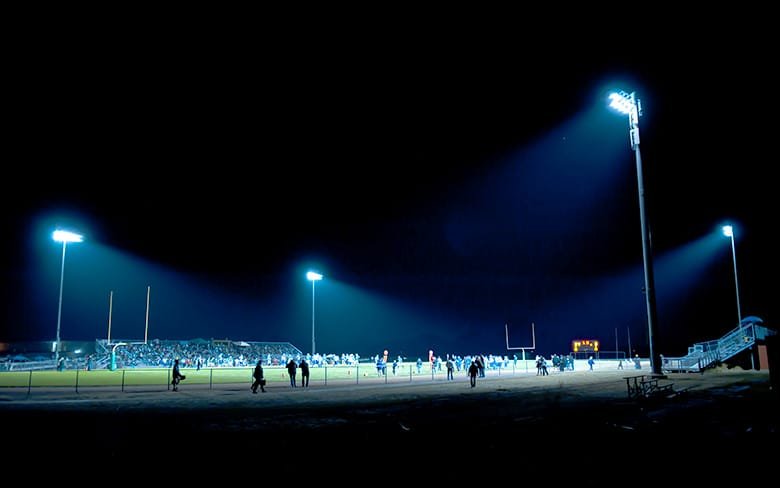Urban lighting can either drain your city’s budget or become a smart, self-managing asset. Which side are you on?
Smart high mast lighting[^1] combines IoT, automation, and energy-efficient LEDs[^2] to create a cost-saving[^3], sensor-integrated infrastructure[^4] for future-ready urban areas.
Traditional lighting systems are simply outdated. Today, decision-makers need smarter tools to control costs and improve infrastructure efficiency—especially in high-traffic zones. Let’s dig into how smart high mast systems are solving real-world urban challenges.
What Makes High Mast Lighting Smart?

Cities still relying on static lighting systems are missing out on serious energy and cost savings.
Smart high mast lighting[^1] uses embedded sensors, centralized controls, and data analytics to adapt illumination levels in real time, optimizing both performance and resource use.
| Feature | Function |
|---|---|
| Remote Monitoring | Manage and diagnose lighting remotely via control centers. |
| Adaptive Dimming | Adjusts brightness based on traffic volume or ambient light. |
| Environmental Sensors | Tracks air quality, humidity, and temperature. |
| Maintenance Alerts | Detects faults instantly and automates repair schedules. |
| Security Integration | Connects with CCTV systems to enhance surveillance. |
This convergence of lighting and digital technology turns basic poles into intelligent city assets.
How Does Smart High Mast Lighting Improve Energy Efficiency?
Energy bills keep rising—but street lighting shouldn’t be the culprit anymore.
By dimming during low-demand periods and using sensors to light only when necessary, smart high mast lights can slash energy consumption by over 70%.
| Lighting Type | Power (W) | Usage (hrs/day) | Annual Energy (kWh) |
|---|---|---|---|
| HID High Mast Light | 1000W | 12 | 4,380 |
| Smart LED (dimming) | 300W | 8 | 876 |
| Total Savings | - | - | 80% reduction |
Digging Deeper into Efficiency
LEDs are the obvious first step—they use a fraction of the power of high-intensity discharge (HID) lamps. But the real leap comes from integrating smart dimming and occupancy sensors. When no activity is detected, brightness automatically lowers—dramatically reducing wasted wattage.
Additionally, these systems extend component lifespans. Fewer burnouts mean fewer replacements, saving both money and manpower.
And don’t overlook the role of centralized control dashboards. Operators can schedule dimming, monitor energy consumption[^5] in real-time, and detect anomalies long before they become system failures.
Combined, these mechanisms create a feedback loop of savings, efficiency, and better service.
How Can Governments and Businesses Benefit from Smart High Mast Lighting?

Large infrastructure projects often suffer from ballooning costs and inefficiencies—but lighting doesn’t have to.
Smart high mast lighting[^1] provides measurable ROI for municipalities and commercial operators through lower utility bills, predictive maintenance, and scalable infrastructure.
| Sector | Benefit | Impact |
|---|---|---|
| Government | Lower OPEX | Up to 80% energy savings, fewer repairs |
| Government | Public Safety | Consistent, intelligent lighting deters crime |
| Government | Carbon Emission Reduction | Green LED tech aligns with environmental mandates |
| Industry | Safer Work Zones | Enhanced visibility in ports and factories |
| Industry | System Scalability | Expandable platforms grow with urban expansion |
| Industry | Data-Driven Optimization | Analytics improve energy and resource management |
Whether you're a public sector planner or a private warehouse operator, smart lighting is no longer a luxury—it's a necessity.
How to Implement Smart High Mast Lighting in a City?
Citywide deployment doesn’t happen with just a few smart bulbs and a laptop.
Effective implementation involves detailed planning, reliable tech selection, and integration into broader municipal systems.
Implementation Steps
-
Assess Real Lighting Needs
Use traffic data and population heatmaps to prioritize areas. -
Select Appropriate Tech Stack
Choose LED luminaires with integrated sensors, controllers, and reliable firmware. -
Establish Interoperability
Connect the lighting system with city IT infrastructure and third-party apps. -
Enable Data & Maintenance Tools
Setup dashboards for live performance monitoring and diagnostic alerts. -
Measure, Refine, Repeat
Analyze real-time data to fine-tune brightness settings and system behavior.
Real-World Example
In Kampala, Uganda, the city started with a pilot on a major intersection. Within 6 months, the energy costs fell by 58%, and public feedback led to faster city-wide expansion. The key was tight coordination between tech vendors, municipal IT teams, and the power authority.
Mistakes to avoid? Don’t ignore training. Municipal teams need proper onboarding to fully utilize remote dashboards and mobile alerts.
What Are the Future Trends in Smart High Mast Lighting?

What if your light poles could repair themselves or predict outages before they happen?
The next wave of smart lighting will bring AI-controlled brightness, renewable integration, and autonomous maintenance—all while supporting other smart city functions like 5G and public Wi-Fi.
| Trend | Description |
|---|---|
| AI Adaptive Control | Lights adjust brightness based on patterns, not just presence. |
| Solar + Storage | Solar high mast lights with lithium battery banks improve grid independence. |
| 5G and IoT Hub | Poles double as smart city connectivity nodes. |
| Predictive Maintenance | AI anticipates failures, reducing downtime. |
This evolution isn’t just about saving power—it’s about turning infrastructure into multipurpose digital real estate. In the future, light poles won’t just light—they’ll talk, measure, and even self-heal.
Conclusion
Smart high mast lighting[^1] isn’t the future—it’s today’s smartest infrastructure upgrade. With cost-cutting, sustainability, and digital integration built in, it’s time for cities and businesses to rethink what light poles can really do.
[^1]: Explore how Smart high mast lighting can revolutionize urban infrastructure and save costs.
[^2]: Discover the benefits of using energy-efficient LEDs for sustainable urban lighting.
[^3]: Find out how modern lighting solutions can significantly reduce city budgets.
[^4]: Understand the importance of sensor integration in optimizing urban lighting systems.
[^5]: Explore strategies for reducing energy consumption through smart lighting technologies.


